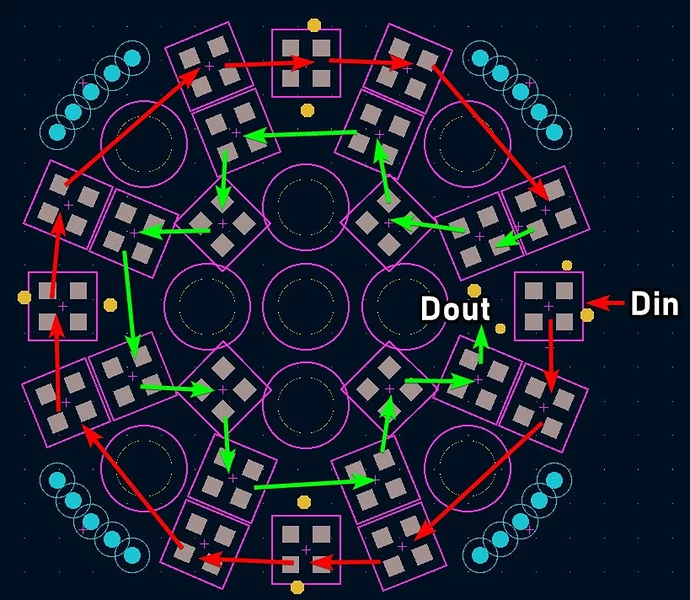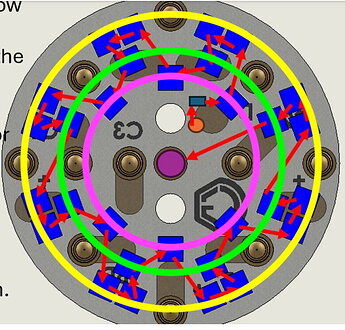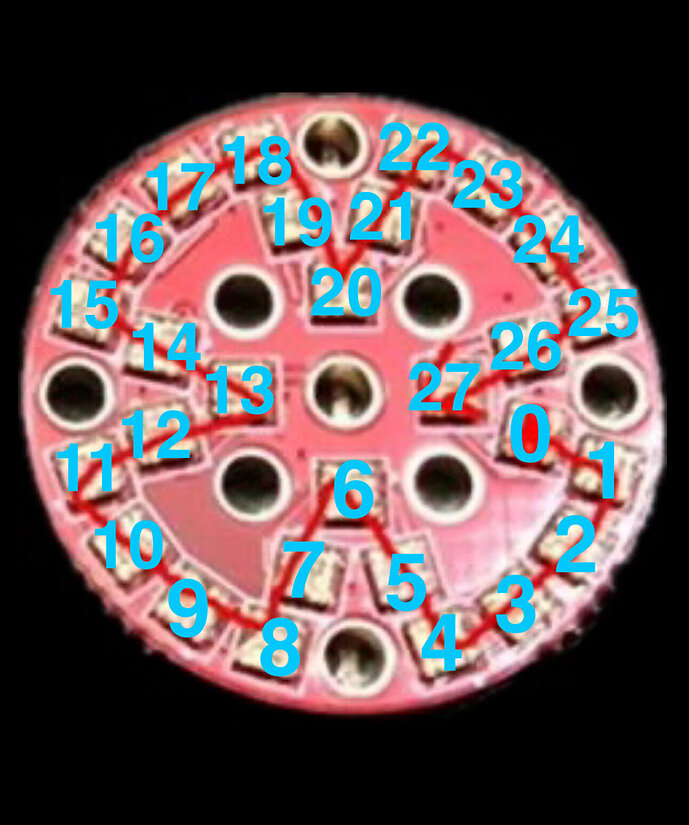I checked out the discussion of the Shadowfoil Hangman PCB where SubBladeZZ was implemented to aid in the complex setup, but this is a different Shadowfoil PCB, and I’ve stumbled upon whether the “with stride” logic can handle the layout. For context, here’s Sam’s data layout:
What I’m hoping to achieve is 3 concentric blades (12, 8, and 4px lengths), and the pixels numbers would be as follows:
outer: 0-11
mid: 12,14,15,17,18,20,21,23
inner: 13,16,19,22
So, the outer would be easily SubBlade(0, 11, NULL), and the inner would be SubBladeWithStride(13, 22, 3, NULL), but the weird intervals of 1, skip 1, 2, skip 1, 2, skip 1, 2, skip 1, 1 don’t seem applicable.
I can imagine a complex subblade setup, like @NoSloppy suggested before the zig-zag stride was created, but my styles would be limited (i wouldn’t be able to have a cylon bladestyle in the middle because) because I could only duplicate the exact same style on all the 1,2,2,2,1 strip and have them be time based (like a pulsing where they all start and stop at the same time).
Am I wrong, and am missing how to setup a blade array to take advantage of the placement? I don’t think ZZ would work, since it alternates left-right. As of late, I’ve only split the emitter into two concentric rings, and it’s obvious when scrolling styles move across the snaking pattern of the inner ring. Still looks cool, but my curiosity got me wondering if I fully understood the newest SubBlade options.
Any suggestions?



